A Guide to Types of Grapes
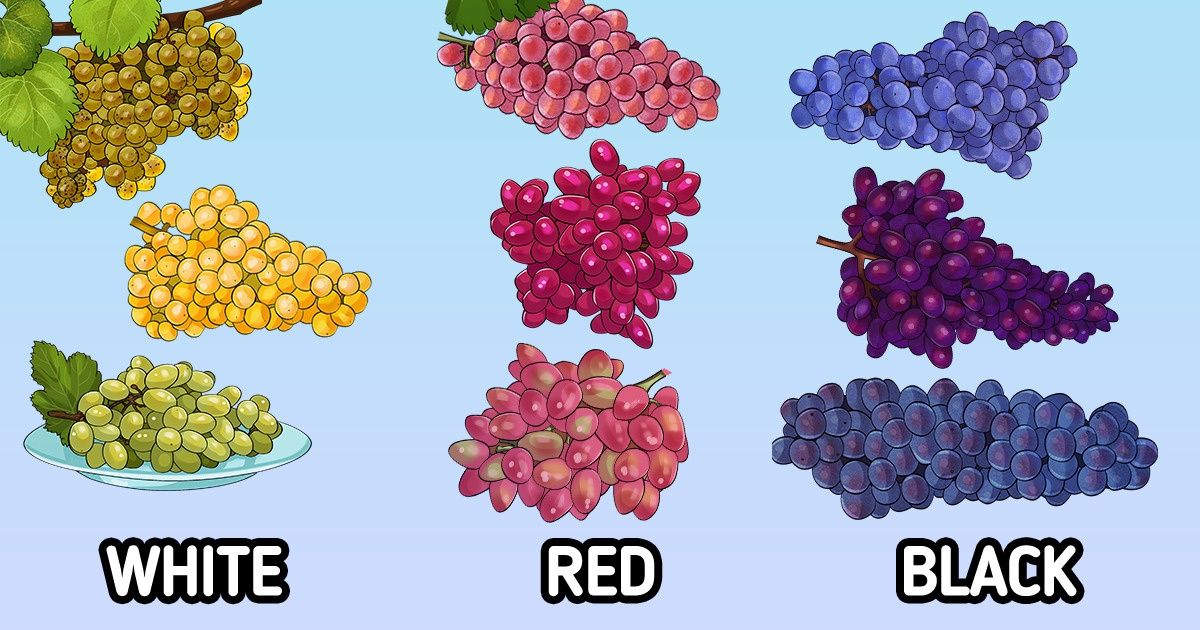
Crimson, pink, and black are all colors of grapes. There are a few thousand types of grapes, but vineyards never stop cultivating new types and subtypes.
5-Minute Crafts found out what different types of grapes there are and what’s so special about each of them.
Table and technical grapes
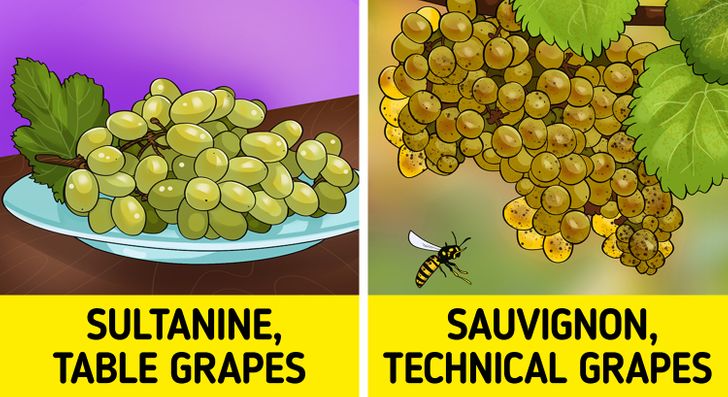
- Table grapes, which include Sultanine, Red Globe, Flame Seedless, etc., are moderately sweet, with thin skin (except for Red Globe) and are generally seedless. The pulp is fleshy and crispy, and the fruit is quite big. Table grapes are consumed fresh (as a dessert or with meat or cheese). Raisins, jelly, and, less often, juices are made from them.
- Technical grapes, such as Chardonnay, Sauvignon Blanc, Ruby Cabernet, Muscat Blanc, and Pinot noir, are used for the production of juices and other beverages, as well as vinegar. Technical grapes contain more sugar than table types, which is necessary for the fermentation process. The fruits are small and with seeds but very juicy.
What the color of grapes say
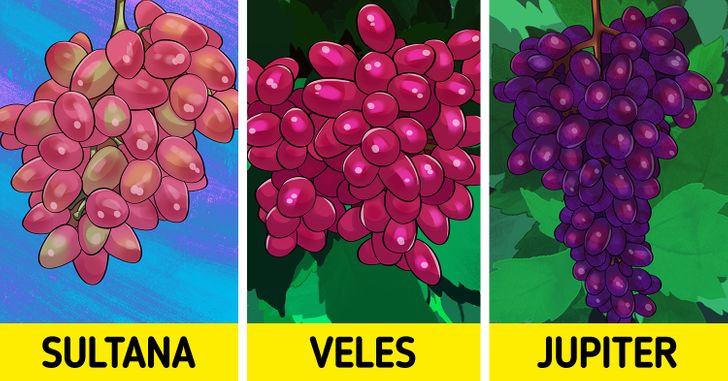
In everyday life, grapes are distinguished by color and are called, respectively, white (although they can be light green, yellow, or amber), red (from pale pink to purple), and black (blue or deep purple).
The color of the skin doesn’t always indicate that the grapes belong to a particular type or variety. For example, bright pink Veles, dark purple Jupiter, or green Sultana are raisins grapes that have the classic properties of table grapes.
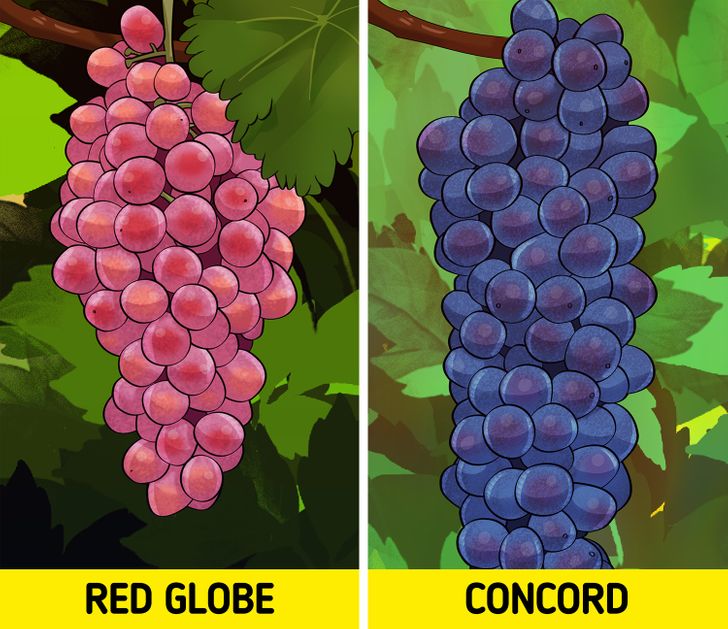
It’s interesting that white grapes are evolutionarily derived from the purple grape. Mutations of white grapes turn off the production of anthocyanins, which are responsible for the color of purple grapes.
Unusual qualities
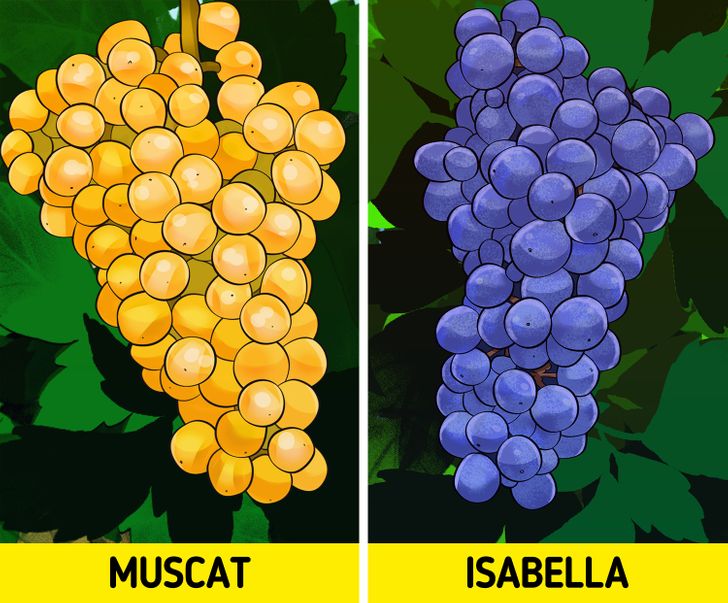
In addition to color, many types of grapes have a distinctive smell or flavor. The universal Muscat (Muscat Blanc à Petits Grains, Muscat of Alexandria, Muscat of Hamburg, or Muscat Ottonel) is one of the first domesticated types. It’s distinguished by the scent of musk. Sauvignon has citrus notes, and Isabella is often compared to strawberries and black currant in taste.

Grapes are valued not only for their fruits but also for their climbing properties. Like other vines, grapes are used for decorative purposes, like hedges, gazebos, arches, and house walls. Grape ivy, riverbank grapes, and pepper vine are best for this.
Exotic types
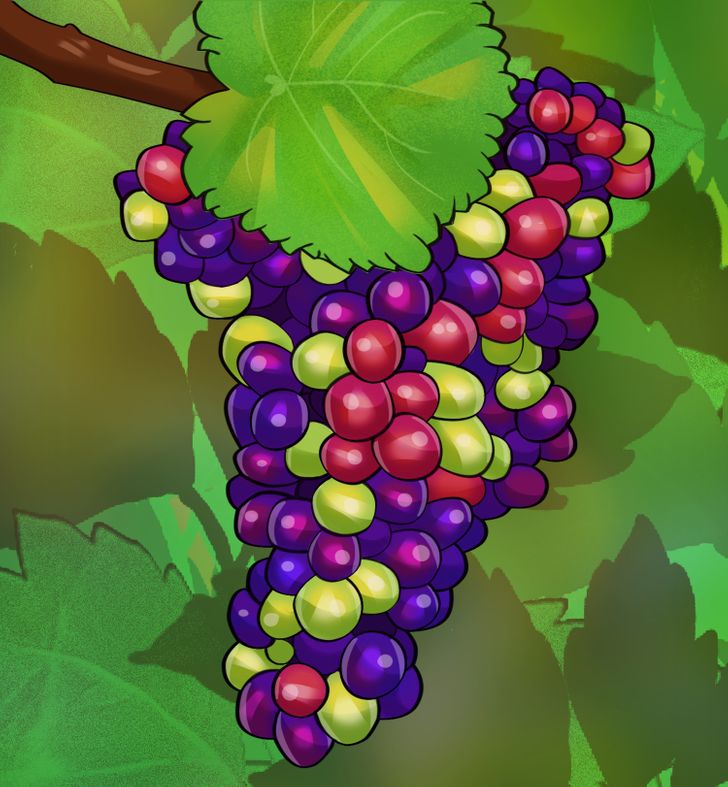
Rare types of grapes, as a rule, are very fastidious, but also extremely unusual.
The trunk of the Latin American tree known as jabuticaba seems to ooze with huge black fruits (this phenomenon of flowers and then fruits, appearing from dormant buds on the trunk, is called “cauliflory”).
The color and size of Japanese Ruby Roman grapes are similar to cherry tomatoes, and Rainbow Grapes ripen into all the shades of the rainbow. In fact, by the end of ripening, the entire bunch becomes purple, and other shades are just intermediate.